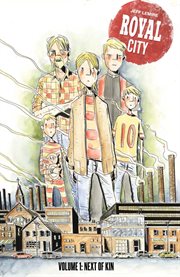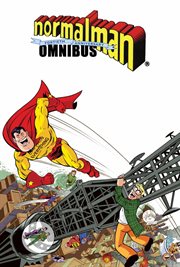Review by New York Times Review
WHO has not seen the remorseful preachers, politicians, actors and other men in the news, begging forgiveness when caught with their pants down and publicly outed as "johns," patrons of the world's oldest profession? To be a known john is to be trailed by shame and stigma, at least in the United States and Canada. There are millions of johns, but for one to come out voluntarily - with honesty, integrity and pride - is indeed rare. In my nearly 40 years in the world of sex workers, I've known only one: Fred Cherry. In the 1980s in New York, Cherry sued Mayor Ed Koch for the legal right to pay for sex with prostitutes (a case Cherry ultimately lost). To ascertain if any other such brave johns had slipped my mind, I surveyed a few of my older prostitute friends. "No, just Fred Cherry," they confirmed. (Today, I might count Charlie Sheen.) So for the Canadian comic artist Chester Brown to announce in his graphic memoir, "Paying for It," that he is a John is truly groundbreaking. You don't have to like comics to relish this book. Brown, whose previous work includes a comic-strip biography of the 19th-century Canadian revolutionary Louis Riel, begins his story in the summer of 1996, when his live-in girlfriend, Sook-Yin, confesses she has fallen for another guy. She also still wants to live with Chester. "I love living with you," she says. Chester - feeling like his "normal, content, all-iswell-with-the-world self" - goes with the flow. ("You're fine with this?" an astonished friend asks him. "I'm fine," Chester replies.) He and his girlfriend transition to being friends and housemates. A few months later, the new boyfriend moves in with them. Brown, still single, realizes he has come to a place in his life where he has "two competing desires - the desire to have sex, versus the desire NOT to have a girlfriend." He seriously questions the idea of romantic love, and concludes it is a virtually impossible ideal. He decides to explore his options, which leads him to experiment with prostitutes. He finds some through brothel advertisements, and also online. "There are a whole bunch of these prostitute-review Web sites," he tells a friend - johns writing for other johns, "like movie reviews or book reviews." Over the course of several years. Brown had numerous paid sexual encounters, and in "Paying for It" he has given each woman a chapter: Carla, Anne, Wendy, Yvette, back to Anne, Jolene, Larissa, Angelina, Kitty, Gwendolyn, Jenna, back to Angelina, Myra, etc. He also recounts conversations about bis thoughts and motivations that he had with his close friends, some of whom disapprove ("There is NO way I'm paying for sex," says one), others of whom are ambivalent ("I think it should be legal, but that's not the same thing as saying it's right"). Chester Brown is not a john to pity. He has options. He is a reasonably handsome, lanky, talented artist, now 51 years old. Some women, and men, who read this memoir may develop a crush on this good-hearted bad boy. The cartoonist R. Crumb, who provides the introduction for the book, describes him as "a very advanced human." Brown also seems to be a feeling, thoughtful, considerate man, honest with himself and others. This graphic memoir is . . . sexually graphic. Chester's penis is a leading character, and a charming one at that. Brown has made no obvious attempt to eroticize his drawings, and as a result his cartoons are totally sexy in the way real life and really good art are sexy. As he explores the logistics of being a John, he shares what he's learned about hygiene, the etiquette of paying and tipping, and the necessary financial planning ("If I went every two weeks, that would be 26 times a year; 26 multiplied by $160 equals $4,160 a year - that's quite a bit"). He also gratefully acknowledges the Canada Council for the Arts "for generously assisting me financially while I wrote and drew this work." Can you imagine the National Endowment for the Arts financing any project remotely resembling this? O Canada! As someone who has had sex of one sort or another with more than 3,000 johns myself, I can attest to the fact that all of Brown's encounters ring absolutely, gloriously true. The usual stereotypes (wallet-snatching junkies with pimps) are avoided, and the lovely moments feel genuine - the pillow talk alone is perfection. If you don't ever have "bad" sex, then you probably haven't been looking hard enough for the really great sex. Brown documents his sad, curious and disappointing paid encounters - always amusing - along with his abundance of sweet, satisfying and successful ones. He appears to be relatively non judgmental, like a person who can equally relish both junk food and a gourmet feast. I found myself utterly captivated by his story, and I loved the transgressive surprise ending (which I won't spoil here). At the end of "Paying for It," Brown provides 23 meticulously drawn appendixes, most of which are devoted to deconstructing just about every argument you can think of against prostitution. He presents the typical objections (e.g., "Prostitution is wrong because it gives a man sexual power over a woman") and counters with utterly rational and incisive responses ("Prostitutes aren't passive puppets, and most johns aren't dictators"), backing up many of his points with observations from sex workers themselves. In the process he makes as convincing a case for the decriminalization and destigmatization of prostitution as anyone I've ever come across in the prostitutes' rights movement. This will be a welcome book to prostitutes everywhere, especially those who have been raped, robbed or busted in places where laws and stigmas against the business make such experiences all the more traumatizing. It is also a valuable resource for academics, a challenge to law enforcement and politicians, and a boon to johns the world over. Brown has 'two competing desires - the desire to have sex, versus the desire NOT to have a girlfriend.' Annie Sprinkle, the author of "Dr. Sprinkle's Spectacular Sex," is an artist, activist and ecosex educator. She worked as a prostitute for 20 years.
Copyright (c) The New York Times Company [July 3, 2011]
Review by Booklist Review
From Harvey Pekar's self-depiction as a neurotic curmudgeon to Joe Matt's of himself as a chronic masturbator, autobiographical-comics creators have been shockingly willing to represent themselves with brutal honesty. Few have gone as far as Brown does in this chronicle of his experiences as a customer of and advocate for prostitution. Fifteen years ago, he rejected the idea of romantic love and, after three years of celibacy, turned with trepidation to purchasing sex from escorts. Finding the straightforward honesty of the transactions to his liking, he continued seeing a series of women-for-hire and vigorously defended the practice to his friends in conversations that are re-created here. Brown's clinical depiction of his encounters is willfully non-erotic. He shows the women from behind, never revealing their faces, and further defuses sensationalism by restricting himself to an unvarying grid of eight small, uniformly sized panels. Expanded arguments for prostitution make bulky text appendixes to this restrained yet revelatory account of an intelligent but emotionally stunted man defiantly rejecting societal norms. Likely to be as controversial as it is fascinating.--Flagg, Gordo. Copyright 2010 Booklist
From Booklist, Copyright (c) American Library Association. Used with permission.
Review by Publisher's Weekly Review
A compelling look into one man's history of employing prostitutes as a replacement for romantic love, this graphic novel is sure to create controversy. Brown has produced acclaimed but brutally honest autobiographical works before, but here he adds a new didactic element. In June 1996 Brown's then girlfriend broke up with him. After three years of celibacy and his growing conviction that romantic love is destructively possessive, Brown works up the courage to see a legal prostitute and finds the "burden" of anxiety over whether to pursue a relationship with any particular woman forever removed. The next 200 pages are an explicit-but far from erotic-dossier of the various women he did business with, until he meets one that he ends up with in a monogamous-but still financial-relationship. Although Brown intends the work to be a compassionate look at a profession that helps people, he unfortunately goes out of his way to anonymize the sex workers-never showing their faces and telling the story in tiny, cramped panels, giving the whole thing a voyeuristic feel. A lengthy appendix arguing that a system where paying for sex is preferable to romance-based methods is unlikely to persuade many readers. (May) (c) Copyright PWxyz, LLC. All rights reserved.
(c) Copyright PWxyz, LLC. All rights reserved
Review by Library Journal Review
It's 1996, and Canadian alternative cartoonist Brown's (Louis Riel) live-in girlfriend finds another love. Deciding he's done with the "boyfriend" role, Brown renounces romance and, after several years, decides to rent his partners. Gradually, he learns the ins and outs of hiring sex workers: finding appealing prospects, making contact, negotiating a successful encounter, tipping, and moving on if not satisfied. By 2003, he has found Denise, a professional escort who pleases him fully, and he falls in love with her. He does not, however, attempt to change their relationship from professional to personal. Brown draws in small, careful panels. He renders himself physically plain, and the sexual episodes, while frank, are presented in a style more clinical than erotic. The story comes across in remembered vignettes, thought balloons, and conversations among Brown and his cartoonist pals, in which they debate the merits of commercial sex compared with romance. A meaty afterword allows Brown to sound off at length about legalizing prostitution. VERDICT Candid memoirs about being a john are rare in prose as well as in comics, and this controversial and thoughtful case study should make fine fodder for classroom discussions. For adult collections, especially academic libraries.-M.C. (c) Copyright 2011. Library Journals LLC, a wholly owned subsidiary of Media Source, Inc. No redistribution permitted.
(c) Copyright Library Journals LLC, a wholly owned subsidiary of Media Source, Inc. No redistribution permitted.



